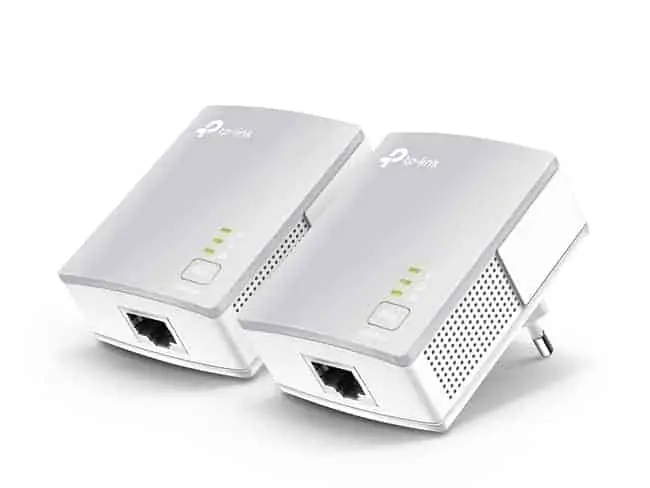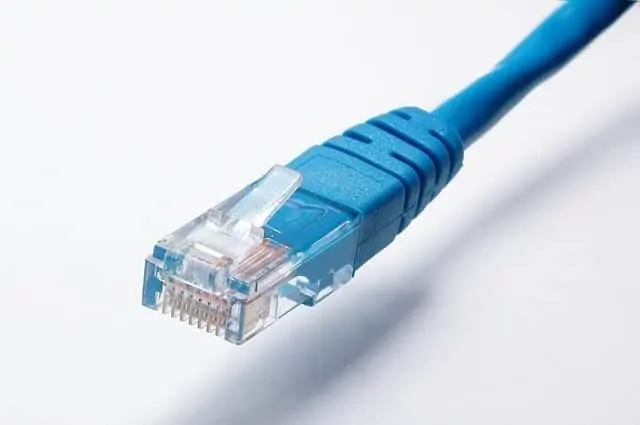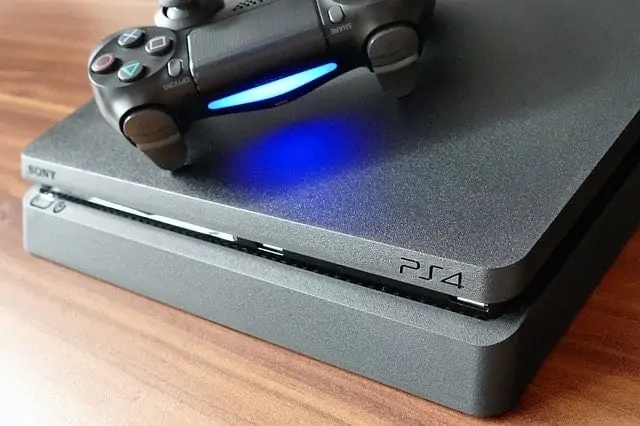Slow download speeds can be a frustrating thing for PS4 users, especially when downloading large files such as games or patches which can be many gigabytes in size. The download can seem to be taking forever. Is there anything we can do to speed it up?
Here are some main reasons why downloads can take so long on the PS4, plus some fixes:
- You are using Wi-Fi (switch to wired instead).
- Slow download server (pause and resuming downloads can sometimes help).
- Downloading in Rest Mode is usually quicker.
- Slow DNS servers (try changing them to 8.8.8.8; 8.8.4.4).
- A busy home network (try waiting until it’s quieter or use QoS).
- Download speeds (Mbps) and file sizes (GB) are different units of measurement.
By far the biggest factor on download speeds on any device is the quality of the connection to the router, and this is no different for the PS4. Therefore let’s address this core issue first, before going to some other of the solutions we mentioned in more detail.
Wi-Fi Can Be Slow (Use a Wired Connection Instead If Possible)
The main way of improving download speeds on your PS4 is to get off Wi-Fi if you are using it and try to get onto a wired ethernet connection if you can.
Wired connections are always better than wireless ones for bandwidth and consistency, giving the best speeds possible. See our article on this for more information.
If you are only using Wi-Fi because you are too far away from the router to run an ethernet cable directly, then a Powerline Adapter could be a good solution to this problem. These are clever home networking devices which allow for a wired ethernet connection to your router, even when you are several rooms away from it.
They consist of a pair of adapter plugs, one of which is plugged in and connected to your router, the other of which is plugged in and connected to your device.
The two plugs then communicate through the electrical wiring of the house to deliver a strong, wired, internet connection to any part of the home. They are plug and play devices with no complex setup or DIY and will work in any house where the circuitry is wired normally and in good condition.

Click here to view the TP Link Nano Powerline Adapter, plus more models, on our powerline page.
Powerline adapters can be an excellent solution in this case, since they allow for a wired connection directly to your router using the house circuitry, which means you can extract the maximum possible bandwidth out of your internet to get your files downloaded faster.
Powerline adapters will work in the majority of houses where the circuitry is wired correctly and still in good condition. In a smaller number of cases they may not work, especially in older houses or with poor/old wiring.
In most modern and semi modern houses you should be fine. Where the house wiring is in good condition, they can deliver a connection almost as good as if you were plugged into the router directly, which is exactly what gamers need for low latency and downloading large files.

Ethernet connections will always be faster than Wi-Fi for downloads.
Try Pausing & Resuming Downloads For Faster Speeds
Sometimes it can just be that the current server you are using for your download is a bit slow, and simply pausing and resuming the download on the “Downloads” screen can give you a better speed.
Sometimes this may not work the first time and you need to pause and resume the download a couple of times to get a better speed.
Realistically though, this solution only rarely works, but is still worth mentioning, as it’s quick to try.
Go to Notifications….Downloads to do this. See this quick video for a demo.
Also, if you have multiple downloads going at once, then pause some of the non essential ones so the ones you really want will download faster.
PS4 Downloads Usually Go Faster in Rest Mode
However, if you find yourself seemingly having to wait forever for your PS4 to download a big file, putting it into rest mode can help to speed the download up a little by saving system resources and allowing the PS4 to devote all it’s processing power to downloading the file.
It is very important to configure the right settings on your PS4 though so it can still download when in rest mode.
Here are the steps to do this:
- Go to Settings on your PS4.PS5 menu.
- Go to Power Save settings.
- Go to Set Functions Available in Rest Mode.
- Make sure the Download Files/Remain Connected to Internet box is ticked.
Your PS4/PS5 will now still continue to download files even when in rest mode, and in some cases this may make the download complete a little faster. You can select rest mode from the PS4’s Power menu or by holding the PS4 button in the middle of your Dual-Shock for a few seconds and selecting Power options and then Rest Mode.
Note – if you’re downloading a game from scratch from disc and also updating the game at the same time, using Rest Mode can halt the installation and you’ll have to continue it once the console is fully turned on again. Therefore it’s a good idea to briefly test out whether Rest Mode works in allowing downloads to continue, to save leaving it for a long time, and finding out game installs/updates haven’t actually progressed at all.
The light on your console will flash orange when it is in rest mode. Pressing the power button or the PlayStation button on your pad will turn the console back on so you can check download progress.
Changing Your DNS Servers Can Speed Up Downloads
Another way to potentially improve download speeds on your PS4 is to change your DNS server settings. This can sometimes improve the bandwidth available to your console, but is very hit and miss and will sometimes make no difference or even worsen the speeds you get. The performance of DNS servers depends on so many different factors it is impossible to predict what will happen in each case if you change them.
However, it is worth trying if you want to see if you can get files to download a little faster. The process is covered in the above video. where three different free DNS services are tested against the default ones provided by the ISP. The tester does indeed find an improvement in bandwidth using different DNS servers; this may or may not be the case for other people who try this.
Here is the process for changing your DNS servers on your PS4. It requires reconfiguring the internet connection mostly as Default or Automatic, but changing to Custom just for the DNS servers and entering your own ones manually. Google DNS (8.8.8.8, 8.8.4.4) are the first one to try.
- Head to Settings, then Network
- Go to Set Up Internet Connection
- Select LAN or Wi-Fi depending on what you are using
- Select Custom
- Click through the IP Address and DCHP settings as they are, without changing them.
- For DNS switch to Manual
- Input your Primary and Secondary DNS Servers as one of these custom pairs. Google DNS is the most common service with the most servers worldwide and is therefore the one to try first:
-
- Google DNS – Primary 8.8.8.8 Secondary 8.8.4.4
- OpenDNS- Primary 208.67.222.222 Secondary 208.67.220.220
- CloudFlare DNS – Primary 1.1.1.1 Secondary 1.0.0.1
-
- Run through the rest of the settings as they are without changing them
- Retest your download and upload speeds by heading to Settings…….Network…….Test Internet Connection. It is worth testing the connection a few times as changing settings can produce a one off fluke improvement in speeds the first time you test it, but then it reverts back to the speeds you were getting before.
Changing PS4 DNS Servers – Quick Guide
Bottom Line – Your download speeds may or may not improve by changing your servers.
It depends on a lot of different factors; see the video above for a detailed test of all three servers. In that case using CloudFlare’s DNS servers gave a slight improvement in download speed over the default ISP ones. The other two delivered worse bandwidth. Every situation will be different.
If you are looking for an even more advanced way of finding the perfect exact pair of DNS servers for your location, then you may want to use the free DNS Benchmark tool, which will run a full test from your computer of all available DNS servers in your area and rank them according to the fastest and most reliable ones. You can then select the two top ranked ones and manually put them into your PS4 as we showed above.
To use this tool you need to visit the website, download the free application and then run the DNS test. Gamers based in the US can use the quick test; someone based in another part of the world may want to run the fuller test that takes around half an hour and tests DNS servers from all over the world to find the two best ones for your location.
In some cases using Custom DNS servers can give a noticeable enough improvement in bandwidth to make it worth changing them. If you really like the results you get from using a certain custom pair of DNS servers, then you can even put them into your router so that all the devices in your house can use them. See here for an article how to do this for some popular routers.
Try To Avoid Downloading When The Home Network is Busy (Or Use QoS)
This is another very common reason why PS4 downloads can go slower than expected – there are simply a lot of people using the internet at the same time in the home (and more generally), and this can increase network congestion and increase the time it takes for downloads to complete.
This problem is worse on Wi-Fi, because it is more prone to congestion. A router can only handle traffic demands on Wi-Fi sequentially, in a queue based system, and not simultaneously. Every device connecting to a router on Wi-Fi has to “queue up” and wait for the router to process traffic demands one at a time.
More devices connecting equals more traffic demands, equals longer downloads, as the router can only do so much at once and has to keep everyone happy.
Wired ethernet connections don’t have this same issue, which is why we advise going wired whenever possible for faster downloads.
However, there is a setting called Quality of Service or QoS, which you can try and use on your router to manage traffic and prioritize your PS4 on the home network.
This is a setting which can tell your router to handle all traffic demands from your PS4 first, before anything else.
It is mainly used to reduce ping on busy networks; nevertheless you can try it if you like to see if it also improves download speeds as well at busy peak times.
Here are the very quick steps to configure QoS on your router (if available):
- Find the MAC address of your PS4 in Connection Settings/Status
- Log into your router (type 192.168.0.1 or 192.168.1.1 into any browser, plus the router password)
- Find QoS Settings if they are available
- Select your PS4 using the MAC address you found earlier.
- Set the priority to Highest or Maximum.
- QoS is not available on all routers.
- See our full article on QoS for the PS4/PS5 for more detailed steps.
QoS isn’t available all the time and you may or may not get better download speeds using this setting. Nevertheless, it is good practice to use QoS to reduce ping at least on busy networks, and may offer some help with download speeds.
More generally, it is also true that downloads can run slower more generally at peak internet use time (evenings and weekends), when lots of people are indoors and using the internet. There isn’t really a great deal you can do about this, other than avoid downloading large files at peak times, and wait until quieter times instead.
Understanding the Difference Between Download Speeds (Mbps) and File Sizes (MB or GB)
One thing that can commonly catch people out is not realizing the difference between download speeds and file sizes. This is something that caught me out when I was expecting a patch download to be completed in seconds when in fact it took many minutes.
“At my internet speeds my PS4 should have that file downloaded almost immediately” I thought, not realizing I was mixing up the way that download speeds and file sizes are measured.
Put simply, download speeds from your ISP are measured in megabits per seconds, whereas file sizes are measured in megabytes or gigabytes, a much larger unit of data.
A bit is eight times smaller than byte, and therefore a megabit is eight times smaller than a megabyte, and a thousand times smaller still than a gigabyte. There are 8000 megabits in a Gigabyte so this gives some idea of why large downloads can take so long.
This is something that many people still don’t realize and ISPs don’t do much to dispel this confusion, often packaging their speeds to appear as megabytes per second when in fact downloads are in the much smaller unit of megabits per second
Technically, megabits are meant to be denoted with a small b (Mb) and megabytes with a large b (MB) and the difference is very easy to miss if it isn’t explicitly pointed out.
Realizing this difference in measurement can often clear the confusion when it sometimes appears the numbers don’t appear to be adding up as to what supposed download speeds we are getting from our ISP and how long our PS4 is taking to download something.
At a download speed of 50 megabits (not megabytes) per second we can expect to download 3000 megabits or just over a third of a gigabyte per minute.
If you have a large game of 20 gigabytes or more to download you can now see why it will take so long. A file that large will take around 1 hour to download at this speed.
